Sustainable agriculture practices help you boost productivity while protecting the environment. By using crop rotation and diverse planting, you enhance soil health and reduce pests. Organic methods like composting and cover crops further promote biodiversity. Managing soil with reduced tillage and frequent testing maximizes fertility, while integrated pest management keeps harmful species in check without harsh chemicals. Implementing these strategies fosters a stronger connection with your community. Keep exploring to uncover even more effective techniques for your farming journey.
Key Takeaways
- Implement crop rotation to enhance soil health and break pest cycles, improving overall sustainability.
- Utilize organic farming practices like composting and cover cropping to promote biodiversity and soil fertility.
- Adopt soil health management techniques, including regular testing and adding organic matter, to boost productivity and water retention.
- Employ integrated pest management strategies that combine biological and mechanical controls to minimize chemical use and protect ecosystems.
- Engage with local communities to foster connections between farmers and consumers, promoting sustainable practices and local food systems.
Understanding Sustainable Agriculture

Understanding sustainable agriculture is crucial if you want to grasp how farming can meet today's needs without compromising future generations. This approach focuses on methods that protect the environment, enhance soil health, and support local economies.
You'll learn that sustainable agriculture aims to reduce reliance on synthetic chemicals and promote biodiversity. It encourages practices that use resources efficiently and responsibly, ensuring that water and soil remain healthy and productive.
Additionally, it fosters community engagement, allowing farmers and consumers to connect over shared values. By adopting sustainable practices, you'll not only contribute to environmental conservation but also create healthier food systems.
Fostering community engagement, sustainable practices unite farmers and consumers, enhancing environmental conservation and creating healthier food systems.
Ultimately, embracing sustainability in agriculture helps secure food for the future while promoting a balanced ecosystem.
Crop Rotation and Diversity
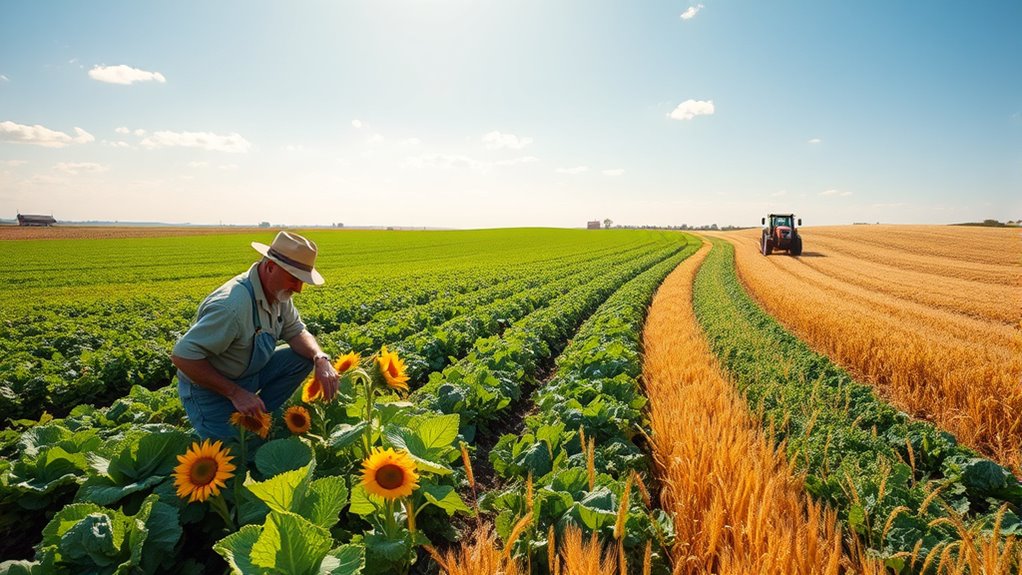
When farmers implement crop rotation and diversity, they significantly enhance soil health and reduce pest and disease pressures. By alternating different crops, you break pest and disease cycles, making it harder for them to establish themselves. This practice also promotes a balanced ecosystem, as various plants attract beneficial insects and improve soil structure.
Additionally, rotating crops can enhance nutrient availability. For instance, legumes fix nitrogen in the soil, which benefits subsequent crops.
You can also improve your farm's resilience to extreme weather events by diversifying your crops. This not only protects against total crop failure but can also lead to more stable incomes.
Ultimately, embracing crop rotation and diversity is a smart strategy that boosts productivity and sustainability on your farm.
Organic Farming Practices

Building on the benefits of crop rotation and diversity, organic farming practices take sustainable agriculture a step further by emphasizing natural processes.
You focus on using organic inputs like compost and manure, which nourish your soil while avoiding synthetic chemicals. By planting cover crops, you enhance biodiversity and prevent erosion. Crop rotation prevents pest buildup, reducing the need for pesticides.
Using organic inputs and cover crops enhances soil health, biodiversity, and pest management without synthetic chemicals.
You also encourage beneficial insects and pollinators by creating habitats within your fields. Emphasizing local resources, you reduce transportation impacts and support your community.
These practices not only improve the health of your farm but also contribute to a sustainable ecosystem. Adopting organic farming methods connects you with nature, fostering a healthier environment for future generations.
Soil Health Management
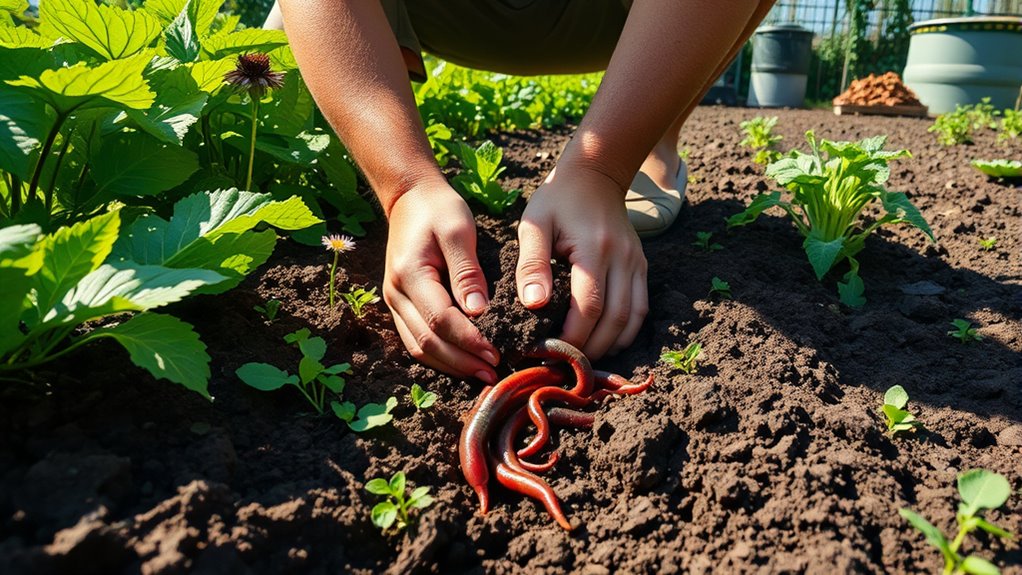
Soil health management plays a crucial role in sustainable agriculture, as it ensures your soil remains fertile and productive.
To maintain healthy soil, you should focus on practices like crop rotation, cover cropping, and reduced tillage. These methods help improve soil structure, enhance nutrient availability, and promote beneficial microorganisms.
Regularly testing your soil allows you to identify nutrient deficiencies and adjust your fertilization practices accordingly. Adding organic matter, like compost, boosts soil fertility and water retention.
Also, be mindful of erosion; planting trees or installing contour strips can help protect your soil from being washed away.
Integrated Pest Management
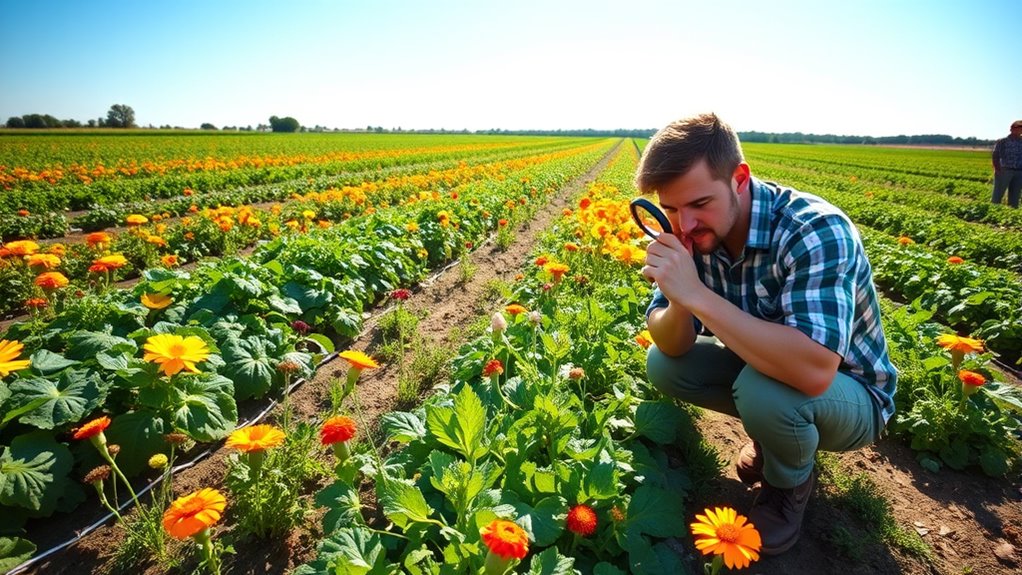
Maintaining soil health is just one piece of the puzzle in sustainable agriculture; managing pests effectively is equally important. Integrated Pest Management (IPM) helps you tackle pest issues while minimizing harm to the environment.
Start by monitoring pest populations and identifying their natural enemies. This lets you decide when action is necessary. Use a combination of biological, cultural, and mechanical control methods to manage pests sustainably.
For example, introduce beneficial insects, rotate crops, and use traps to reduce pest numbers without relying solely on chemicals. If you must use pesticides, opt for targeted, less harmful options.
Water Conservation Techniques
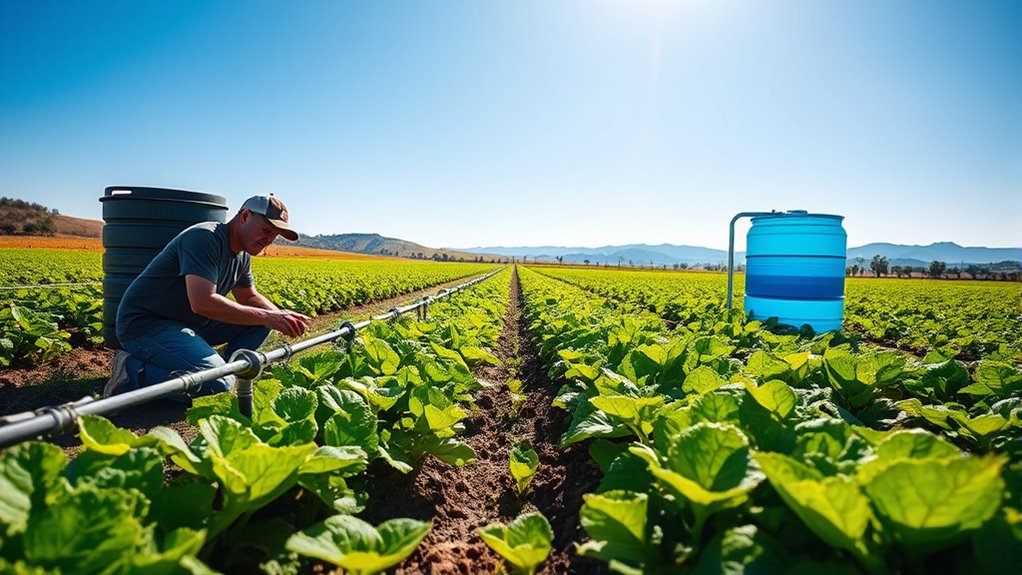
While it's easy to overlook, conserving water is crucial for sustainable agriculture. You can implement several effective techniques to make a difference.
Start by utilizing drip irrigation systems, which deliver water directly to plant roots, minimizing waste.
Mulching around your crops helps retain soil moisture and reduces evaporation.
Consider rainwater harvesting; collecting and storing rainwater can significantly supplement your irrigation needs.
You might also rotate crops to enhance soil health, which in turn improves its water retention capacity.
Monitoring soil moisture levels ensures you're watering only when necessary.
Lastly, planting drought-resistant crops can reduce overall water usage.
Agroforestry and Permaculture
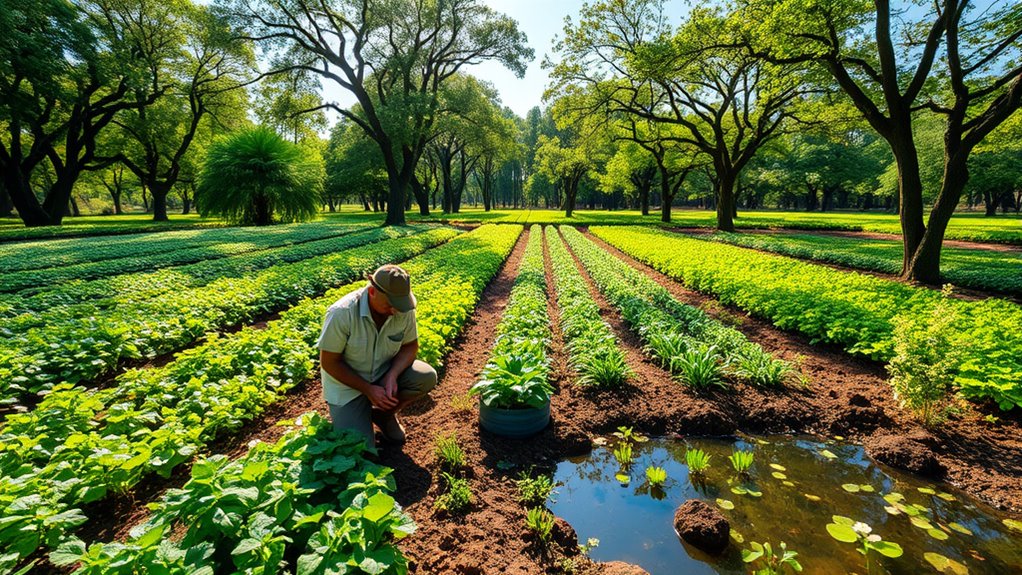
Agroforestry and permaculture offer innovative approaches to sustainable agriculture that integrate trees, crops, and livestock in a harmonious system. By incorporating diverse species, you can enhance biodiversity and improve soil health.
For instance, you might plant nitrogen-fixing trees alongside your crops, enriching the soil naturally. This practice not only boosts yields but also reduces the need for synthetic fertilizers.
In permaculture, you design your farm to mimic natural ecosystems, optimizing resource use and minimizing waste. This means creating zones for plants, animals, and water catchment areas that work together efficiently.
Both methods promote resilience against pests and climate change, ensuring your farm remains productive in the long run. Embracing these practices can lead to a thriving and sustainable agricultural system.
Community Supported Agriculture (CSA) Initiatives
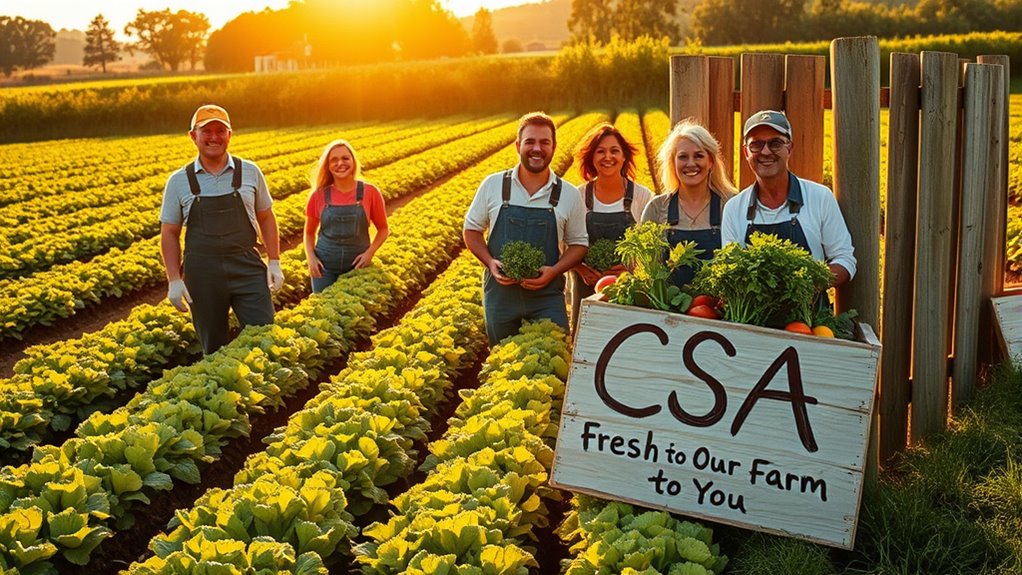
Building on the principles of agroforestry and permaculture, Community Supported Agriculture (CSA) initiatives foster a direct connection between farmers and consumers.
By joining a CSA, you support local agriculture while receiving fresh, seasonal produce directly from the farm. This model allows you to engage with the food you eat, creating a sense of community and shared responsibility.
You'll often have the chance to visit the farm, meet the farmers, and learn about sustainable practices firsthand. Additionally, CSAs help reduce the carbon footprint associated with food transportation and packaging.
Frequently Asked Questions
How Can I Finance Sustainable Agriculture Practices as a Farmer?
To finance your sustainable agriculture practices, start by exploring grants and loans specifically designed for eco-friendly projects.
You can also consider crowdfunding or partnering with local businesses that support sustainability.
Look into government programs that incentivize green practices and connect with agricultural cooperatives for shared resources.
Networking with other farmers can provide insights and potential funding sources.
Don't forget to create a solid business plan that outlines your goals and expected returns.
What Certifications Are Available for Sustainable Farming?
You might think certifications are just another hurdle, but they're actually gateways to credibility and market access.
Various certifications like USDA Organic, Fair Trade, and Rainforest Alliance can boost your farm's reputation and appeal to conscious consumers. Each has its own requirements, but they show your commitment to quality and sustainability.
How Do I Market My Sustainably Grown Products?
To market your sustainably grown products, start by identifying your target audience.
Use social media to showcase your farming practices and share your story.
Collaborate with local businesses and farmers' markets to reach more customers.
Create eye-catching packaging that highlights your sustainability efforts.
Consider offering samples or hosting farm tours to engage potential buyers.
Don't forget to leverage online platforms for broader outreach, making it easy for consumers to connect with your brand.
What Are the Long-Term Benefits of Sustainable Agriculture?
Think of sustainable agriculture as planting seeds in a garden that thrives for generations.
You'll enjoy long-term benefits like improved soil health, which boosts crop yields and reduces the need for chemical fertilizers.
Your farm becomes resilient against climate change, ensuring your livelihood remains stable.
Plus, you'll attract a loyal customer base that values eco-friendly practices, enhancing your reputation and opening doors to new markets.
Ultimately, you're nurturing both your land and future.
How Can I Educate My Community About Sustainable Practices?
To educate your community about sustainable practices, start by hosting workshops or informational sessions.
Share engaging content through social media and local newsletters.
Collaborate with schools to incorporate sustainability into their curriculum.
Organize community events where people can share ideas and experiences.
You could also create a resource center with pamphlets and videos.
Conclusion
Incorporating sustainable agriculture practices not only benefits the environment but can also boost your farm's productivity. Did you know that farms using crop rotation can increase yields by up to 30%? By embracing techniques like organic farming, soil management, and water conservation, you're not just protecting natural resources; you're also investing in your future. Making these changes can lead to healthier ecosystems and a more resilient farming operation, ensuring you thrive for generations to come.









